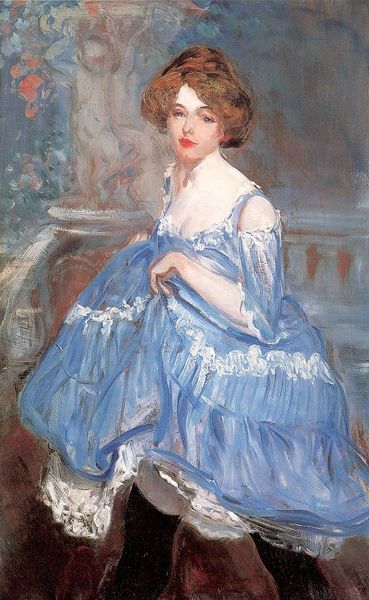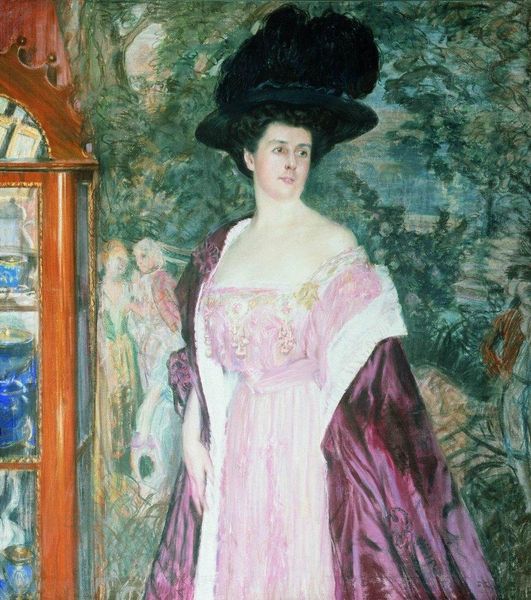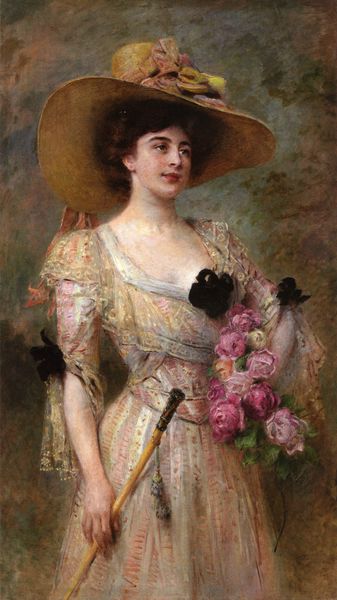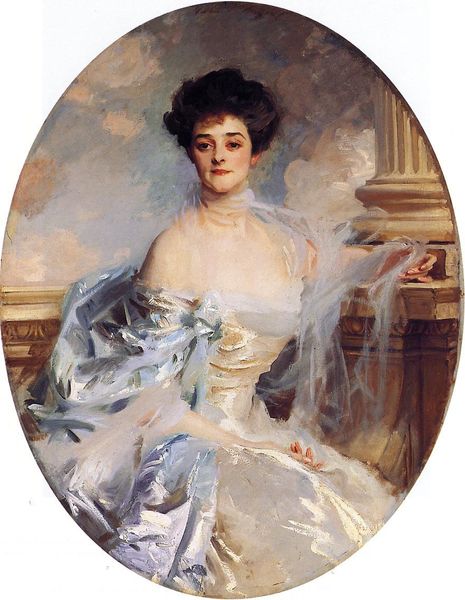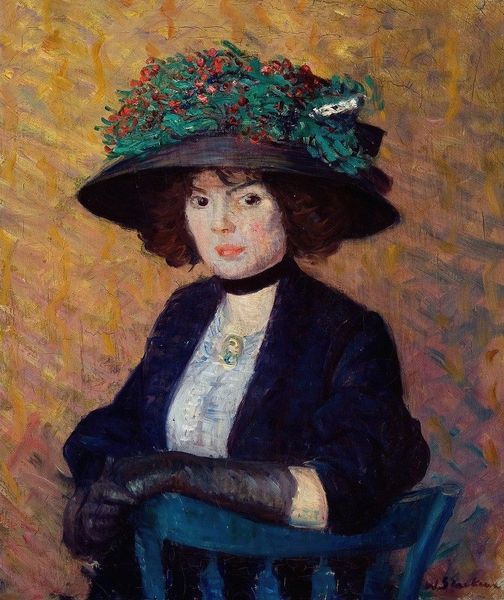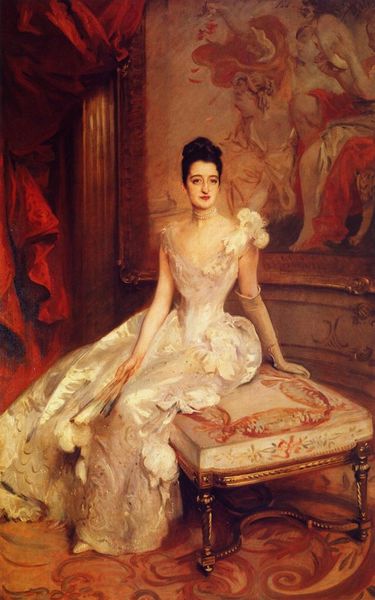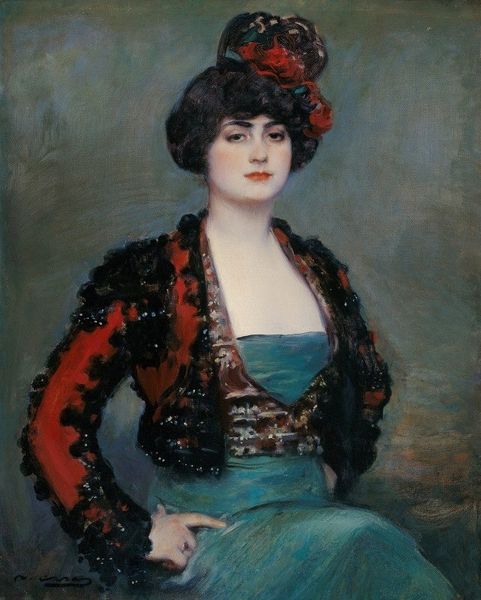
painting, oil-paint
#
portrait
#
painting
#
painting
#
oil-paint
#
german-expressionism
#
oil painting
#
neo expressionist
#
expressionism
#
lady
Copyright: Public domain
Editor: Here we have Lovis Corinth's "Portrait of Eleonore von Wilke, Countess Finkh," painted in 1907, using oil paints. The detail in the dress and hat is astonishing. What strikes me is the way she seems slightly removed, even lonely, despite her obvious wealth. How do you interpret this work? Curator: It's interesting that you pick up on the loneliness. Corinth painted this during a fascinating period, rife with social change and anxieties about identity, especially for women navigating patriarchal structures. What do you notice about her gaze? Does it meet yours directly, or is it averted? Editor: It's almost like she's looking past me, lost in thought. Curator: Exactly. This averted gaze speaks volumes. In the context of early 20th century Germany, women of the Countess's social standing were often trapped between expectations of decorum and a burgeoning desire for autonomy. The opulence of her attire – the lavish dress, the elaborate hat – could be seen as a kind of gilded cage. Corinth, though a man, often captured a sense of this tension in his portraits of women. What do you think the fan in her hand might symbolize? Editor: Perhaps a desire for privacy, something to hide behind? Curator: Precisely. It's a subtle barrier, hinting at the performative aspects of femininity during that era. The fan becomes a prop in a carefully constructed performance of social identity, even masking potential emotional depths. By understanding the socio-political context, this portrait offers a more complex story of gender, class, and individual agency. Editor: I see it so differently now. The painting feels much more complex and sad than when I first looked at it. Thanks so much! Curator: It’s amazing how historical context can shift our perceptions. A deeper engagement reveals the stories embedded within.
Comments
No comments
Be the first to comment and join the conversation on the ultimate creative platform.


